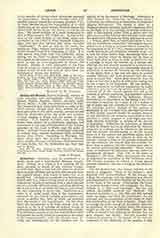

Abdon and Sennen, Saints (variously written in early calendars and martyrologies Abdo, Abdus; Sennes, Sennis, Zennen), Persian martyrs under Decius, about A.D. 250, and commemorated July 30. The veneration paid them dates from as early as the third century, though their Acts, written for the most part prior to the ninth century, contain several fictitious statements about the cause and occasion of their coming to Rome and the nature of their torments. It is related in these Acts that their bodies were buried by a subdeacon, Quirinus, and transferred in the reign of Constantine to the Pontian cemetery on the road to Porto, near the gates of Rome. A fresco found on the sarcophagus supposed to contain their remains represents them receiving crowns from Christ. According to Martigny, this fresco dates from the seventh century. Several cities, notably Florence and Soissons, claim possession of their bodies, but the Bollandists say that they rest in Rome.
JOHN J. WYNNE

